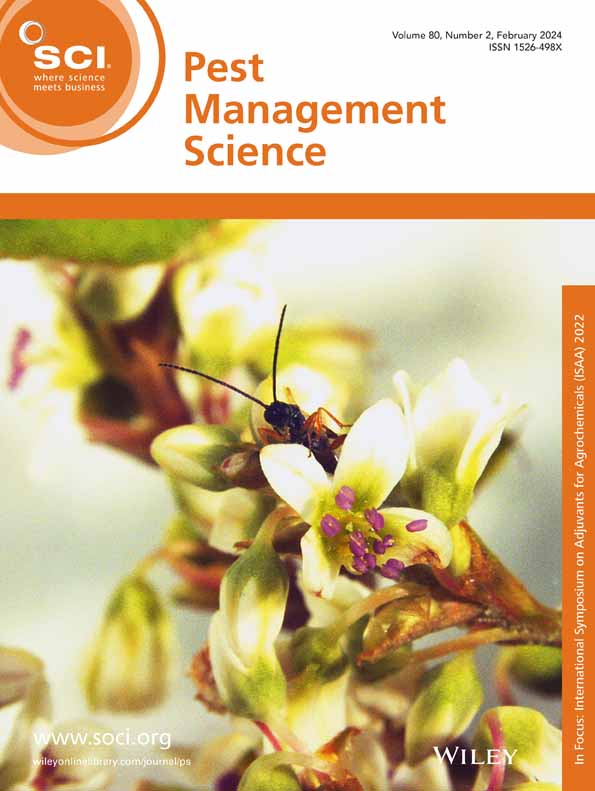Resistance to the herbicides haloxyfop and iodosulfuron is common in commercial ryegrass (Lolium) seed lines
IF 3.8
1区 农林科学
Q1 AGRONOMY
引用次数: 0
Abstract
BackgroundRyegrass (商业黑麦草(Lolium)种子品系对除草剂氟吡甲禾灵和碘磺隆的抗药性很普遍
干草业(Lolium spp.)是一种重要的草料,为新西兰的国内生产总值(GDP)贡献了140亿美元。然而,黑麦草也可以作为杂草,并进化出对用于其控制的除草剂的抗性。农民怀疑进口种子可能会导致抗性问题。对拟在新西兰繁殖的商品黑麦草种子品系的抗除草剂频率进行了调查。来自新西兰、美国、欧洲和日本等地区的56个基本种子批次和52个独特品种的样品进行了田间试验。然后在幼苗上喷洒三种常见的除草剂:草甘膦、碘磺隆和氟草磷。幸存的植物被重新测试以确认抗性。结果79%的种子品系对氟虫磷和(或)碘磺隆有抗性。然而,与新西兰的线路相比,进口线路(来自美国和欧洲)的频率并不明显高。氟氧磷抗性检出率为0.00112% ~ 10%,碘磺隆抗性检出率为0.00212% ~ 14.28%,对草甘膦无抗性。在不同种子公司的种子样品中检测到的抗性无显著差异。结论63%的抗性品系的抗性频率低于0.1%,但考虑到典型的播种率,这是一个潜在的问题。进口种子源与国产种子源差异不显著;它们对农民构成了类似程度的抗药性风险。多花黑麦草的抗性频率高于多年生黑麦草(虽然只评价了6个多花黑麦草批次)。育种者应筛选早期杂交后代的抗除草剂能力。©2025作者。《病虫害管理科学》由John Wiley &出版;我代表化学工业协会的儿子有限公司。
本文章由计算机程序翻译,如有差异,请以英文原文为准。
求助全文
约1分钟内获得全文
求助全文
来源期刊

Pest Management Science
农林科学-昆虫学
CiteScore
7.90
自引率
9.80%
发文量
553
审稿时长
4.8 months
期刊介绍:
Pest Management Science is the international journal of research and development in crop protection and pest control. Since its launch in 1970, the journal has become the premier forum for papers on the discovery, application, and impact on the environment of products and strategies designed for pest management.
Published for SCI by John Wiley & Sons Ltd.
 求助内容:
求助内容: 应助结果提醒方式:
应助结果提醒方式:


